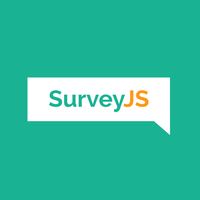Get real-time insights from all types of time series data with InfluxDB. Ingest, query, and analyze billions of data points in real-time with unbounded cardinality. Learn more →
Joystick Alternatives
Similar projects and alternatives to joystick
-
SurveyJS
Open-Source JSON Form Builder to Create Dynamic Forms Right in Your App. With SurveyJS form UI libraries, you can build and style forms in a fully-integrated drag & drop form builder, render them in your JS app, and store form submission data in any backend, inc. PHP, ASP.NET Core, and Node.js.

-
InfluxDB
Power Real-Time Data Analytics at Scale. Get real-time insights from all types of time series data with InfluxDB. Ingest, query, and analyze billions of data points in real-time with unbounded cardinality.

-
inertia
Inertia.js lets you quickly build modern single-page React, Vue and Svelte apps using classic server-side routing and controllers.
-
awayto
Awayto is a curated development platform, producing great value with minimal investment. With all the ways there are to reach a solution, it's important to understand the landscape of tools to use.
-
trustfall
A query engine for any combination of data sources. Query your files and APIs as if they were databases!
-
SaaSHub
SaaSHub - Software Alternatives and Reviews. SaaSHub helps you find the best software and product alternatives

joystick reviews and mentions
-
Simplicity Is an Advantage but Sadly Complexity Sells Better
I built a full-stack JS framework [1] that I thought would be a hit. As best as I can tell, because it lacks the complexity/word salad of existing solutions, it's mostly been ignored despite being (imo) an elegant solution to a long-standing problem.
[1] https://cheatcode.co/joystick
- Show HN: Joystick – A Full-Stack JavaScript Framework
-
Ask HN: Freelancer? Seeking freelancer? (April 2024)
SEEKING WORK, Tennessee, United States
Remote: Yes
I'm a full-stack, JavaScript/Node.js developer and designer. I'm the creator of the Joystick JavaScript framework [1], Push deployment service [2], and Mod CSS framework [3].
I also have experience with MongoDB, PostgreSQL, and MariaDB (limited but competent) and devops (K8s + Docker and bare-metal linux admin, the latter preferred for simplicity/stability).
Currently looking to take on clients who are open to using Joystick, Push, and Mod to design and develop their app. Because it's still at a pre-release version, I'm willing to work out deals around pricing to get some more test-cases under my belt. Ideal client is a solopreneur w/ funding or entrepreneur with previous experience + funding. Open to working with startups (early or established), but only on greenfield projects where use of Joystick is ok.
Email: [email protected].
[1] https://cheatcode.co/joystick
[2] https://cheatcode.com/push
[3] https://cheatcode.co/mod
- Ask HN: Freelance website builders/maintainers, what's in your 2024 toolkit?
-
Web Components Eliminate JavaScript Framework Lock-In
There is. I was frustrated by all of the chaos and built a solution [1]. Not too far of from an RC1 and then a 1.0 (which is being done slowly so I can freeze APIs and avoid the typical JS rug pulls).
[1] https://github.com/cheatcode/joystick
- Web Components Will Outlive Your JavaScript Framework
-
We should start to add “ai.txt” as we do for “robots.txt”
I've been (slowly) writing a new type of OSS license around this exact concept so it's easier to (legally) stop LLMs hoovering up IP [1] (under "derivative works not permitted").
[1] https://github.com/cheatcode/joystick/blob/development/LICEN...
- GitHub - cheatcode/joystick: A full-stack JavaScript framework for building web apps and websites.
- Joystick: A full-stack JavaScript framework for building web apps and websites
-
React is a fractal of bad design
Joystick [1] will let you go. No Stockholm syndrome. No lotion in the basket.
[1] https://github.com/cheatcode/joystick
-
A note from our sponsor - InfluxDB
www.influxdata.com | 10 May 2024
Stats
cheatcode/joystick is an open source project licensed under GNU General Public License v3.0 or later which is an OSI approved license.
The primary programming language of joystick is JavaScript.

Sponsored